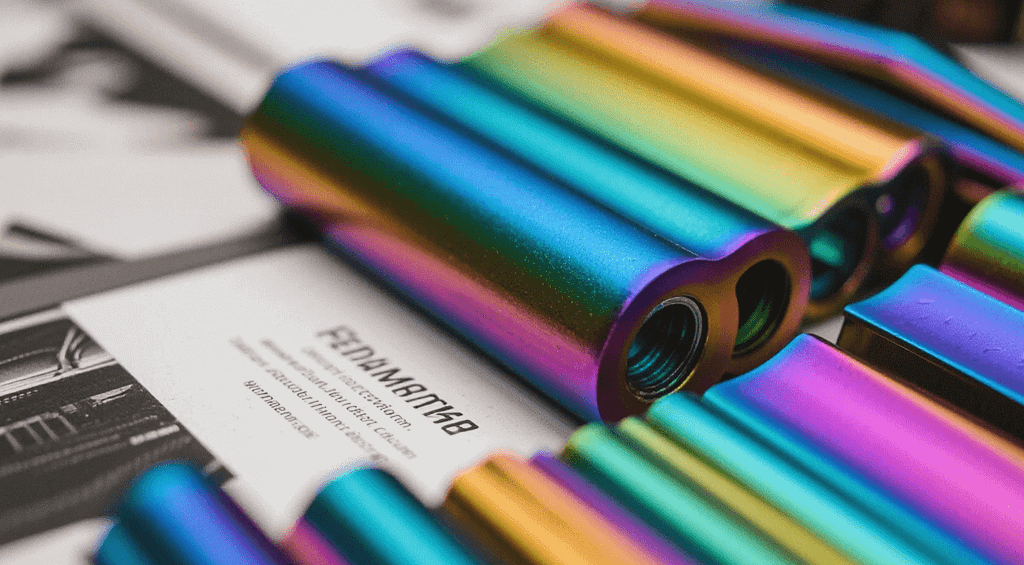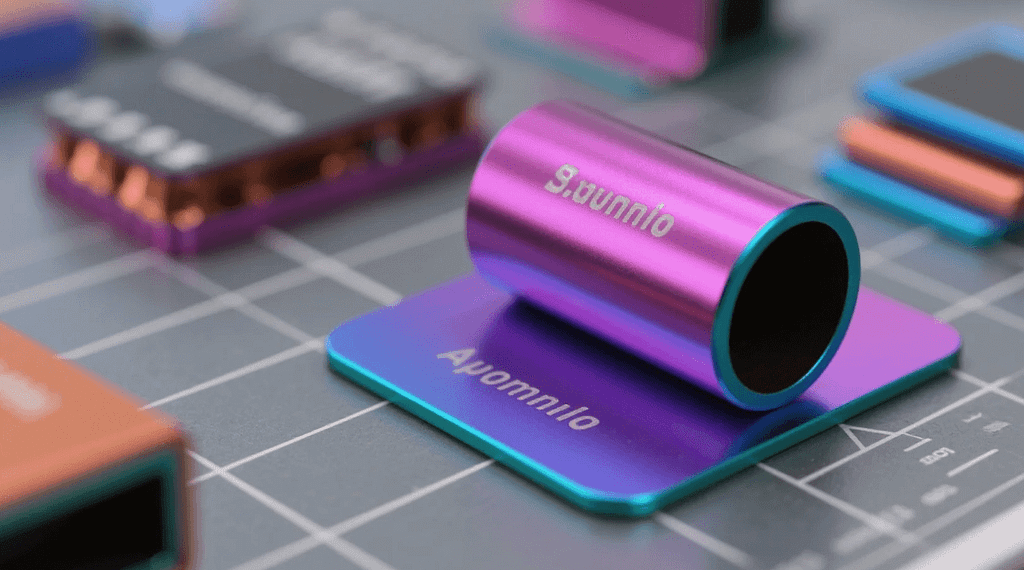In the world of precision industrial models, where every detail matters and durability is paramount, the choice of surface finish plays a crucial role. Beyond mere aesthetics, a well-chosen finish can significantly enhance the model’s longevity, resistance to wear, and overall functional integrity. Among the most effective and widely utilized surface treatments for aluminum components is the process of 아노다이징. This article explores the intricacies of anodized finishes, focusing on their distinct advantages and diverse applications within the realm of high-precision industrial models, providing valuable insights for users seeking superior model solutions.
Understanding the Anodizing Process
아노다이징 is an electrochemical process that converts the metal surface into a durable, corrosion-resistant, anodic oxide finish. Unlike paints or plating, which apply an external layer, anodizing integrates the finish with the underlying aluminum substrate. This is achieved by immersing the aluminum part in an electrolyte bath and passing an electric current through it. The aluminum acts as the anode (positive electrode), and oxygen ions are released from the electrolyte, reacting with the aluminum to form an aluminum oxide layer. This layer grows from the surface inward, creating a highly tenacious and porous structure that can be subsequently dyed and sealed.
Key Characteristics and Advantages of Anodized Finishes
The unique properties imparted by the 아노다이징 process make it an ideal choice for enhancing precision industrial models. Several core advantages stand out:
Exceptional Corrosion Resistance
One of the primary benefits of anodized finishes is their superior resistance to corrosion. The dense, hard aluminum oxide layer acts as an effective barrier against environmental elements, chemicals, and general wear. This is particularly crucial for industrial models that might be exposed to varying conditions during testing, display, or even long-term storage, ensuring their integrity and appearance are maintained over time.
Enhanced Hardness and Wear Resistance
The anodic oxide layer is significantly harder than raw aluminum. This increased surface hardness provides excellent resistance against scratches, abrasions, and general wear and tear, which is vital for models that are frequently handled or subjected to repeated assembly and disassembly. For precision industrial models, where dimensional accuracy and surface quality are critical, this enhanced durability helps preserve their fine details and structural integrity.
Aesthetic Versatility and Color Options
Beyond its protective qualities, 아노다이징 offers extensive aesthetic possibilities. The porous nature of the freshly formed anodic layer allows for the absorption of various organic and inorganic dyes, resulting in a wide spectrum of vibrant and durable colors. This color versatility is invaluable for industrial models that require specific branding, functional coding, or simply a premium visual appeal. Once dyed, the layer is sealed, locking in the color and preventing fading, even under UV exposure.
Electrical Insulation Properties
The aluminum oxide layer formed during 아노다이징 is non-conductive. This makes anodized finishes valuable for industrial models that incorporate electronic components or require electrical isolation between parts. This property can be a significant advantage in the prototyping of electronic enclosures or components where electrical interference needs to be minimized.
Excellent Adhesion for Further Coatings
While 아노다이징 itself provides a robust finish, the porous nature of the unsealed oxide layer offers an excellent surface for the adhesion of additional coatings, such as paints or lubricants, if further customization or specific functional properties are desired. This creates a strong bond, preventing chipping or peeling of subsequent layers.
Lightweight Advantage Retained
A significant advantage of aluminum in industrial models is its high strength-to-weight ratio. 아노다이징 enhances the surface properties without adding significant weight, thereby preserving the inherent lightweight benefits of aluminum. This is especially important for larger models or those used in applications where weight is a critical factor.

Applications of Anodized Finishes in Precision Industrial Models
The benefits of anodized finishes are widely leveraged across various sectors requiring precision industrial models.
Automotive and Aerospace Prototyping
In the automotive and aerospace industries, lightweight yet robust components are paramount. Precision models of engine parts, aerodynamic structures, or interior components often undergo 아노다이징 to enhance their wear resistance during testing and to provide a high-quality finish for presentations. The ability to color-code different sections or materials also aids in visual analysis and assembly.
Consumer Electronics Enclosures
Many high-end consumer electronics utilize anodized aluminum for their casings due to its premium feel, scratch resistance, and array of color options. For precision industrial models of these devices, 아노다이징 accurately replicates the final product’s appearance and durability, making them ideal for form factor evaluations, ergonomic studies, and marketing prototypes.
Medical Device Models
In the medical field, sterility, biocompatibility, and durability are crucial. While direct patient contact applications might require specific medical-grade anodizing, industrial models for medical devices benefit from the enhanced wear resistance and aesthetic appeal that anodized finishes provide for demonstration, training, and early-stage development.
Architectural and Design Models
For architectural models or intricate product design prototypes, aesthetics are key. Anodized finishes allow designers to achieve specific metallic hues, matte or glossy effects, and a refined tactile experience. This helps in conveying the intended look and feel of the final product, enhancing the realism and impact of the model.
Functional Prototypes and Fixtures
Beyond purely visual models, many precision industrial models serve as functional prototypes or custom fixtures for manufacturing processes. Here, the enhanced hardness and corrosion resistance provided by 아노다이징 are critical, ensuring that these functional components can withstand repeated use and maintain their dimensional accuracy over time.
Choosing the Right Anodizing Process for Your Model
There are several types of 아노다이징 processes, each offering distinct characteristics:
- Type II (Sulfuric Acid Anodizing): This is the most common type, producing a clear or colored finish with good corrosion and abrasion resistance. It’s versatile and widely used for general industrial models.
- Type III (Hardcoat Anodizing): Also known as hard 아노다이징, this process produces a much thicker and denser oxide layer, offering superior hardness and wear resistance. It’s ideal for models that will experience significant friction or abrasive contact.
- Chromic Acid Anodizing (Type I): This produces a thinner, more opaque layer, primarily for corrosion resistance. It’s often used when minimizing fatigue strength reduction is critical, though it’s less common for aesthetic precision models due to its limited color options.
Selecting the appropriate type depends on the specific requirements of the industrial model, including its intended use, desired aesthetic, and environmental exposure. Consulting with an experienced finishing service can help determine the best approach.
The Future Outlook for Anodized Finishes
The relevance of anodized finishes in the production of precision industrial models is only set to grow. As industries continue to demand higher levels of detail, durability, and customization for their prototypes and display models, the capabilities of 아노다이징 will become even more indispensable. Innovations in electrolyte formulations, dyeing techniques, and sealing processes promise even more robust, aesthetically diverse, and environmentally friendly anodized solutions. The ongoing focus on lightweight materials like aluminum, coupled with the need for high-performance surface treatments, ensures that 아노다이징 will remain a cornerstone in the creation of top-tier industrial models.
결론
For those involved in the creation and utilization of precision industrial models, understanding the profound benefits of 아노다이징 is essential. This electrochemical process transforms ordinary aluminum into an extraordinary material, endowing models with enhanced durability, superior corrosion resistance, versatile aesthetic appeal, and functional integrity. By integrating anodized finishes into your precision model services, you not only elevate the quality and longevity of your products but also deliver significant added value to your clients. As technology progresses, the role of 아노다이징 in ensuring the excellence and reliability of industrial models will continue to be a vital component of advanced manufacturing and design.
자주 묻는 질문(FAQ)
What types of metals can be anodized?
While aluminum is the most commonly anodized metal, certain other non-ferrous metals like titanium and magnesium can also undergo specific anodizing processes.
Does anodizing change the dimensions of the model?
Yes, 아노다이징 does add a slight thickness to the surface of the part, as the oxide layer grows both outward and inward. For precision models, this dimensional change is typically accounted for in the design phase, especially for tight tolerances.
How durable are the colors in anodized finishes?
The colors in anodized finishes are generally very durable, resisting fading and chipping. However, prolonged exposure to harsh UV radiation or aggressive chemicals can potentially cause some color degradation over time, depending on the dye and sealing process used.
Can a previously anodized part be re-anodized?
It is possible to re-anodize a part, but the existing anodic layer must first be stripped off using a chemical process. This process can slightly reduce the base material’s dimensions, so it’s often more cost-effective to produce a new part if a different finish is desired.
Is anodizing an environmentally friendly process?
Compared to some other surface finishing techniques, 아노다이징 can be considered more environmentally friendly due to its lower use of hazardous chemicals and reduced waste generation, especially when proper waste treatment and recycling practices are implemented.
